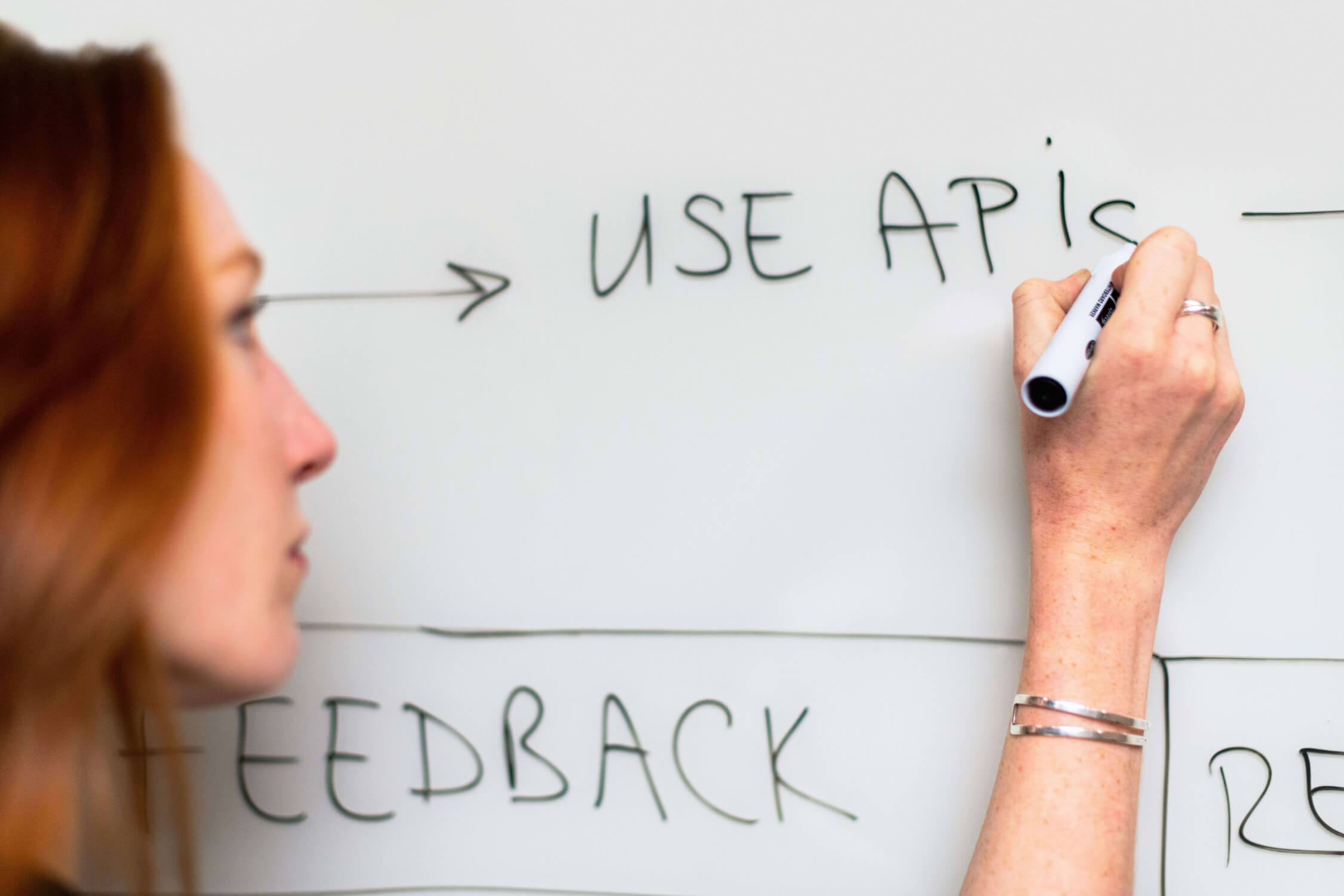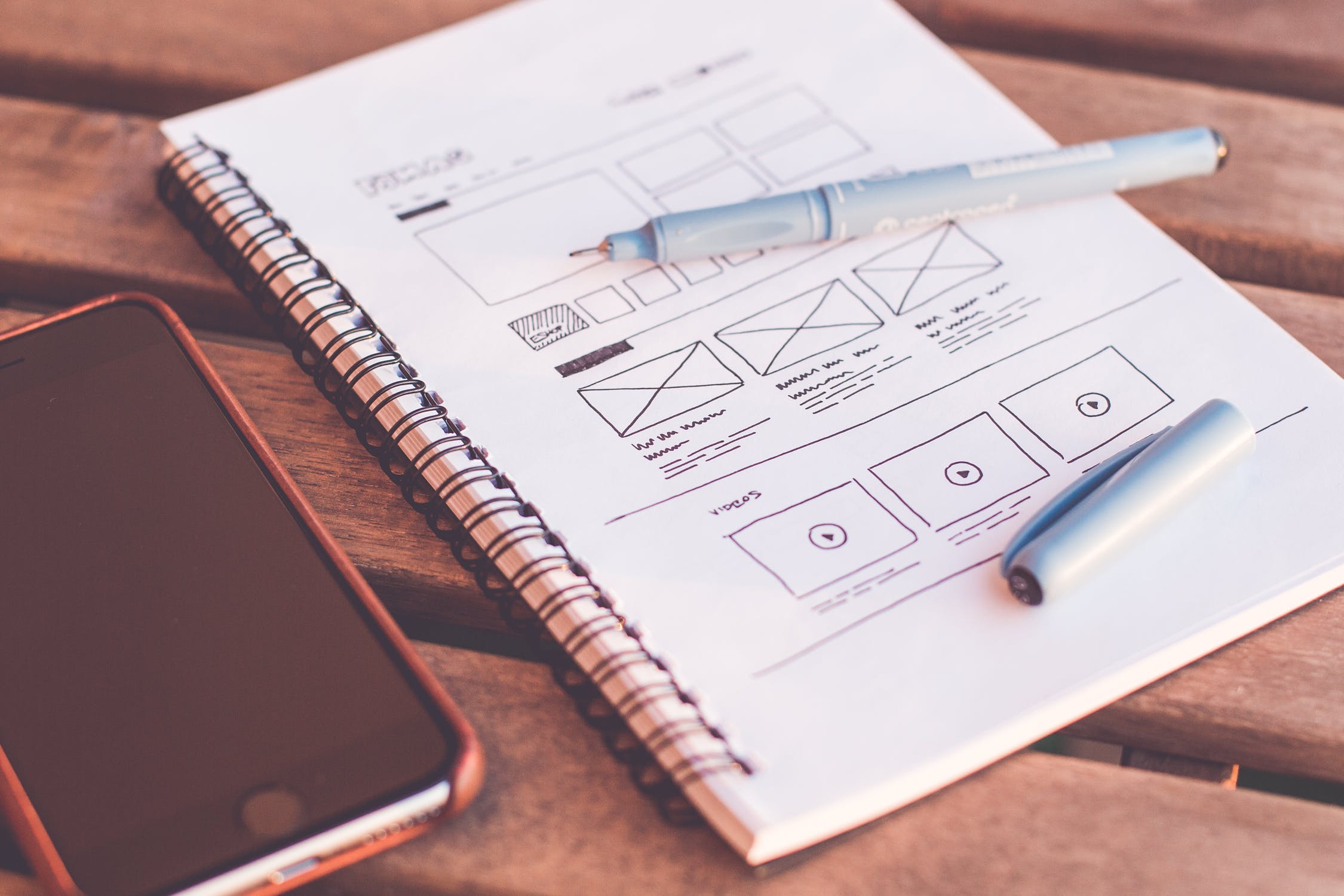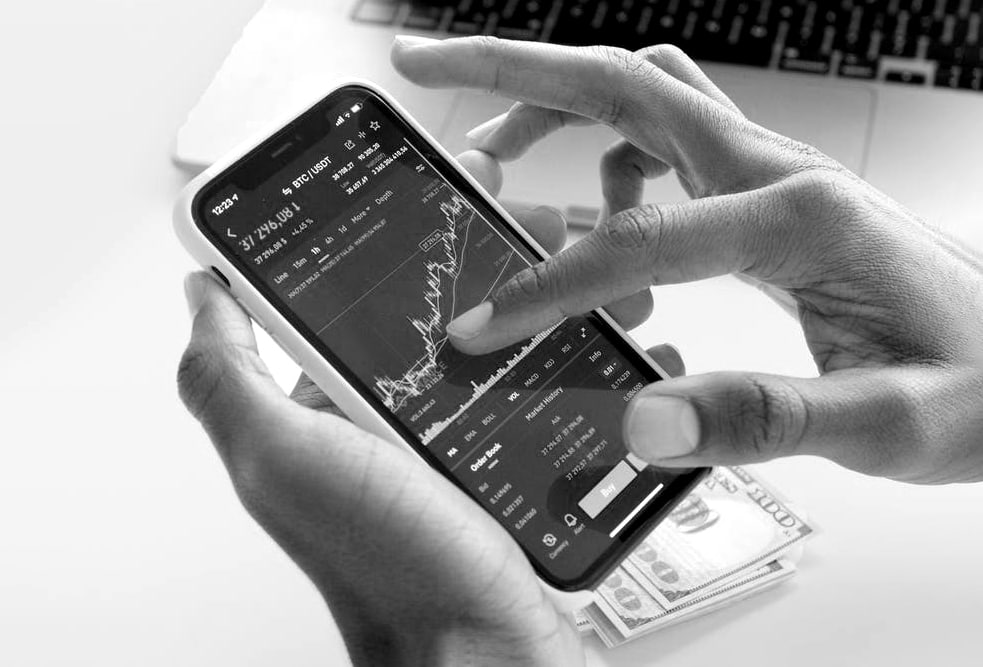How are mobile banking apps developed? The development process of mobile banking apps is very similar to other types of product development.
The primary difference is an extra focus on compliance and standards.
Every product development journey is different. You may have to go through some or all of the following phases as you navigate through your app manufacturing process:
- Pre-discovery
- Discovery
- Design
- Delivery
- Launch and further development
This article will explain each of the phases in detail. You will also learn about key testing methodologies, which are an important part of any product development.
Pre-discovery Phase

So, what comes first in mobile banking app development?
The pre-discovery phase of any development involves teams setting a firm foundation for the work to come. All stakeholders in the project must clearly understand the targeted outcomes and the approach required to get there.
Getting to grips with the problem space
An app solves a problem. That’s why you need a thorough understanding of the problem space before you start. Before setting any concrete plans in place, research teams should clearly understand:
- The legislative environment
- The current service deficit and user complaints
- Metrics and measurements related to the service
It’s crucial to understand why the work has been initiated and what is the urgency for change. Pre-discovery is very important in order to plan and budget for a strong multidisciplinary team that can take the project from beginning to end.
Align the team
Your team must have a shared understanding of the problem space and what it was brought together to achieve. Make sure that the team understands:
- Who is on the team and what are their roles?
- How will you navigate and overcome project hurdles?
- How will you review your work and at what intervals?
At the end of Pre-discovery
When you are done with this phase, you should have created a simple problem statement that your team can verbalise. You should also have a statement on how to fix the problem. This will serve as a guiding principle if the project loses direction.
Phase 1. Discovery Phase

With pre-discovery done, the discovery phase is where teams create clear, actionable plans according to a strategy. You have done all the abstract work of understanding the project needs, and it’s time to get to the next stage.
This is a key phase that contains important elements such as:
- Layout of the app architecture
- Technical specifications
- Business flows and process flows
- Team assignments and deployment
- Software requirements specification [SRS]
- Detailed design plan and efficiency evaluation using PERT (Program Evaluation and Review Technique) analysis
App architecture
App architecture is a clear description of the structure of a software system. It provides information on how the software behaves, and it is a crucial part of any mobile banking app development.
App architecture is meant to allow stakeholders such as designers, developers, project managers, and even end-users to understand the system. If all these different stakeholders can understand the system easily, then giving directions for downstream design and implementation actions becomes simpler.
This is where case diagrams of UML modelling are so important. There are three important types of UML modelling that can be captured in diagrams, tables, and other documents:
- Structural modelling describes the basic static features of a system
- Behavioural modelling concerns itself with the interaction within the system
- Architectural modelling represents the overall framework of the system, covering both structural and behavioural elements
Software requirements specification
An (SRS) is a document that lays out what the software will do and how it will work. This document also describes how the product will fulfil the needs of all users.
A typical SRS includes:
- a purpose
- an audience and a use case
- an overall description
- product scope
- definitions and acronyms
- specific requirements
SRS documents are useful as the foundation of your project. They clearly show the steps that every team will follow.
Phase 2. Design phase

In the design phase of mobile banking application development, teams concentrate less on the overarching aims of the project. The central question is "how will we build this solution?"
At this point, the project team should have a complete set of requirements to work from. Usually, several construction alternatives will present themselves. These alternatives include the choice of tools and technology, and the structure of the components to be built.
Proof of Concept
You wouldn’t build a car that won’t run. A project in its infancy needs evidence to show that everything that is put into its design will work and offer a return on investment.
A Proof of Concept (PoC) helps to decide whether these ideas can be funded.
The value of a PoC is that it can help concerned stakeholders identify shortfalls in the process that might affect its chances of success. A PoC typically needs wide-ranging feedback to reduce unforeseen risk.
The major advantages of a POC are that it allows you to:
- focus the team on the requirement more carefully
- surface any bottlenecks or gaps in the implementation
- produce a clear yes or no if the project needs a green light
Estimation
Estimating a project is a difficult task. All projects, whether big or small, contain many unknowns that can escape the attention of even the best planners.
To create a workable estimate, you need to know your deliverables, tasks, and processes in great detail. Project estimation is important because it proposes an informed prediction of how much time and money is required to finish a project.
This information is critical as project managers try to balance the expectations of company leaders. In turn, company leaders need to schedule new product rollouts according to their strategy.
Phase 3. Delivery Phase

Prototyping
Once you get the go-ahead from a successful PoC, prototyping is the next stage. In software engineering, prototyping refers to the process of demonstrating what the product will look like after development.
Prototyping of mobile banking apps is concerned with UI/UX. Here you can visualize exactly how the consumer will use the product and engage with it.
A typical prototype development process involves creating several web app screens to look like a model of your app. Prototyping has a short lifespan. Once any design shortfalls are identified, developers can implement feedback. The process is iterative, with alternative versions showing continued improvement.
There are four prototyping model types:
- Rapid. Products are altered or discarded quickly after feedback
- Evolutionary. The product is slowly developed according to a sequence of user feedback
- Incremental. Here the product can be split into sub-parts that are assessed individually. They are merged at the end
- Extreme. This model is common in app development. Multiple options can be rapidly tested and implemented at once
MVP
MVP stands for a minimum viable product. This is where developers flight a product version with just enough features to capture the essence of the product.
An MVP is not simply a concept, like a PoC or prototype, but it is a genuine product that has been stripped down.
It intends to actually solve the problems of initial users. This process is useful, as it gives more targeted feedback than you would get from a conceptual POC or prototype.
The key features of an MVP approach are:
- products can be ready for release quickly
- it tells developers if the core features are working as intended
- it saves time, effort, and money in the developmental stage
- it can give a much clearer answer to the question of product viability
- it reduces risk by eradicating costly errors
- it can advance the project for a relatively small outlay
Development Methodologies
There are various development methodologies that can be used for banking app development. The SCRUM framework is one such model.
This is a useful framework for developing complex products. It works best for small teams of ten or fewer. The methodology seeks to break tasks into small goals that can be completed in the allotted times. These are called sprints, and they last for only a few weeks or a month.
Mobile banking app testing
Testing is crucial in app design. There are typically five quality gates that must be passed before a mobile banking app is ready for launch.
Unit testing
This process involves the testing of individual pieces of units of source code.
It is the foundational method of testing for mobile banking apps as it breaks component parts into their smallest portions.
It is intended to check whether the most basic usage procedures and operating procedures are in good working order.
Integration testing
Integration testing is where software modules can be connected in groups. This form of testing is carried out to assess whether selected components are working according to functional requirements.
Integration testing is conducted after unit testing as groups of components can be scaled up to even larger groups for further testing. This is a key part of component readiness.
MTM
One common and highly usable test system is Microsoft Test Manager. Like other competing products, it is designed to allow teams to collaboratively plan and measure test cases for defects.
There are several advantages to choosing a purpose-designed testing system:
- Test processes are built to be replicated, so no step is left out
- All test case results can be stored in one location
- It can load user stories into the system to verify your testing coverage
- Collaboration between teams of testers is easy
- It easily documents defects for learning
Automation testing
Unlike manual testing, automation testing does not require physical time and effort to ensure the software code behaves as it is supposed to.
Manual testers must make records of their findings. Automated testing is less repetitive and time-consuming as it is conducted through an automated tool.
Penetration testing
This is the final quality gate. The functions of new releases must undergo stringent penetration testing to ensure that system performance is not compromised.
A penetration test attempts to take advantage of any system vulnerabilities as if it were an actual malicious threat actor.
Penetration testing often includes network penetration testing and application security testing. This important final test is intended to validate the robustness of the product in the real world.
Mobile app security requirements
Security procedures for mobile banking apps are very stringent. This is true not only after rollout, but during development too. Data must be securely kept behind a secured perimeter. It is important to clearly lay out access procedures, and access must be restricted to prevent any possible interference with the system.
Best practice items for security involve segregation of duties and anonymisation of access. In addition, passwords must be secured through CICD (Continuous Integration Continuous Deployment process).
Mobile banking apps handle sensitive and valuable consumer information. This is why there is such a high burden on product security. Each banking app is a small doorway into the global financial system, so the emphasis on security is appropriate.
One industry requirement that drives this level of security is KYC, or Know Your Customer. This is a system where financial services professionals need to attempt to understand their customers and manage the risks of doing business with them.
Other industry standards compel mobile banking app developers to adhere to tough oversight standards. One example is PCI DSS, which is the Payment Card Industry Data Security Standard.
Another example of banking rigor is that developers must include high-level security enhancements such as giving their apps the ability to create and constantly rotate passwords.
Phase 4. Launch and further improvement

By this stage, you will have developed all the technical aspects of your product.
You understand your value proposition. You know how to support the product with convincing web page copy and landing pages, white papers, and other sales materials.
At the launch phase, you are tapping into another set of core skills within your organization. You are now trying to draw in your customers by informing them, educating them on the product, and creating an aspirational angle that will make them buy from you.
Your launch toolkit will look something like this:
- Prepare your promotional sales materials
- Have your sales teams at the ready
- Know who your buyers are and how you will pitch to them
With regards to your sales tools, you will enter a fiercely competitive marketplace, so you need to convincingly advise your customers how the product will change their lives. On the big day, make sure that you have all your:
- Press tools and materials
- Informative customer communication
- Internal launch communication
- Detailed product materials such as video guides and literature
- An up-to-date product web page
Continuous Improvement
You can always improve your product, even after launch day. You might find the need to not only change the features of your product but also the pricing and positioning. As your product becomes less novel, you will need to find ways to re-invigorate interest. Each product goes through a natural life cycle that involves stages of introduction, growth, maturity, and decline.
You will also likely get feedback from customers. Your design process will have been detailed and comprehensive, but there is always a chance that something goes slightly wrong when the product is in the hands of real consumers and is put to the stresses of mass usage.
Cash is becoming a thing of the past. There will always be growth prospects for mobile banking. Therefore continuous improvement must be a natural part of mobile banking app development.
What AI Has Brought New to Mobile Banking App Development
With the rise of artificial intelligence (AI), mobile banking app development is undergoing changes and innovations. AI transforms the banking experience by enabling personalized mobile banking app development services, improved security, and automation of routine tasks.
Here are some of the innovations AI is bringing to mobile banking app development:
- Process automation. AI can automate many repetitive back-end processes to improve efficiency for banks.
- Personalized financial advice. AI algorithms can analyze user income, spending habits, goals, and other financial data to offer tailored advice and recommendations.
- Biometrics. AI-based biometrics like facial and voice recognition are being built into mobile banking apps for easier and more secure user authentication. It creates a seamless login experience and enhances app security.
- Fraud prevention. AI fraud prevention systems monitor user behavior patterns to flag actions that deviate from normal activities in real time. They can also launch fraud prevention mechanisms, thus allowing banks to detect and stop fraud much faster than manual review.
- Conversational chatbots. AI-powered chatbots can handle many routine customer service inquiries — from checking account balances to resolving disputes. Chatbots equipped with natural language processing can have personalized conversations to understand each user's needs and situation.
- Predictive analytics. By applying machine learning algorithms to customer data, banks can gain valuable insights into user needs and preferences, anticipating what services or products a customer might want.
- 24/7 Virtual Assistance. Robotic process automation can take over data entry, documentation, customer onboarding, and other repetitive processes quickly and without errors.
You will need to use AI technologies if you want to build a mobile banking app that is smarter, more intuitive, and more helpful for customers. AI solutions can enhance security while also providing hyper-personalization.
Banking App Development Example
Let’s look at one successful example of a white-label banking solution developed by S-PRO. This app helps individuals and businesses embed financial services into the client experience, enhance banking business offerings, and speed up the digital transformation of payments.
S-PRO's team provided a full range of services, including project management, business analysis, solution architecture, design, mobile banking app development, backend development, quality assurance, and DevOps. A team of 15 specialists worked on this project to ensure the smooth delivery of the banking app.
The mobile application was developed according to the customer's requirements and has web and mobile versions for Android and iOS. It is scalable and easily customizable, thanks to the use of the StoryBook library, which ensures that all application components are standard.
Specification, mind maps, and BPMN diagrams were used to collect requirements and a list of features for the application. The team also provided a fully documented API SDK and a customizable constructor so that FinTechs and large businesses can take the client's repository and embed it in their project or remake it and get a full-fledged banking app.
The mobile banking app architecture and user interface were designed to ensure a seamless user experience. The app offers various features, including card and transaction management. The solution's regulatory, security, and technical expertise ensure that any company that uses the app can rely on it to embed payments smoothly into their customer journey.
Scalability, customization options, and seamless user experience are app characteristics you should aim for to build a mobile banking app that stands out. Such apps are a perfect addition for any company looking to accelerate their banking projects by outsourcing payment needs.
How much does it cost to develop a banking app?
Pricing differs, but according to our estimates, simple apps can cost from $50,000. The same estimates show that higher-level apps can cost as much as $150,000. The average development time is minimum 10 weeks for a fully-staffed and efficient team.
There are several financial model routes you can take when designing an app.
One of those methods involves creating your own internal team to design and implement the app. This method involves the high costs of hiring the team, and you still have to decide what to do with them after you complete the app.
Alternatively, you could hire an external team. This is known to be a little more expensive in the short term, but you can just as easily dispense with the team once the job is complete.
External teams also have the advantage of being specialists in their field who have created an efficient process through trial and error. You get best in class expertise in various key fields, including project management, user experience design, and coding. The all-important element of security is also carried out with high efficiency and quality.
Developing a mobile banking application is a complex project that requires significant investments of time and money. The costs can vary widely depending on the specific features and functionality required.
Here is a breakdown of estimated costs by development stage for key features:
| Basic Features | Estimated Development Time (in hrs) | Advanced/Extra Features | Estimated Development Time (in hrs) |
|---|---|---|---|
| Authorization | 480 | Automatic Regular Payments | 240 |
| Card Information | 240 | Cashback | 240 |
| Payments and Transfers | 480 | G Pay or Apple Pay 480 Integration | 480 |
| Transaction Records | 240 | Bill Splitting | 480 |
| Push Notifications | 120 | Spending Tracker | 240 |
| Branch and ATM locator | 120 | ||
| Chatbot | 280 | ||
| QR Code-Based Payments | 120 | ||
| Total Time & Money | 2080 hrs, or $100,000-$300,000 | Total Time & Money | 1680 hrs, or $50,000-$200,000 |
The total costs are based on the complexity of the features, design quality, backend infrastructure needs, and rates of the development team. The minimum cost of a full-featured banking app is $150,000.
The development process can take up to 12 months. Going with an experienced financial app development company can ensure you get a high-quality and secure app within your budget.
Mobile Banking App Development: How to Accelerate Development and Reduce Costs
Mobile app development for banking companies can take years without adequate preparation. Here are some tips from industry experts that can help you accelerate this process:
- Have a strategy. To attain any objective, you should have a strategy in place. It should guide the work process and avoid detours leading to delays. Your strategy should have a calendar with key dates and milestones of the project, considering potential risks and their possible solutions.
- Define revenue goals. Be clear about the revenue goal and measure it at all stages of development.
- Automation and integration of an app. Automation helps reduce time to market (TTM), and technology is a great ally in reducing the likelihood of human error, improving problem-solving times, and lowering the workload of the team.
- Create MVP. With this concept, you can test the app’s usability much faster and with real users. Use it to validate your idea and gather feedback that will help you in further development interations.
- Implement agile methodologies. Agile ensures flexible and iterative development stages for better outcomes and higher user satisfaction.
- Be creative. Think out of the box and be ready to adapt to new challenges. Surrounding yourself with a team of experts, or having a dedicated team, can help you to respond to new project challenges more effectively.
- Consider outsourcing. It’s often a great decision to achieve the goal because it allows you to avoid overloading team members.
Here are some recommendations for reducing the costs of mobile banking app development:
- Provide detailed project requirements. A detailed technical brief makes the development process easier.
- Minimize the app functionality. To save time and money, you must remove unnecessary features and focus on the main ones.
- Do not postpone fixing errors. Fixing new bugs as they occur is less painful and cheaper than trying to deal with them in the final version of the app.
- Don't skimp on the QA team. An experienced QA team would perform necessary testing and ensure a bug-free product, thus avoiding additional expenses.
- Interact with the development team. Regular communication guarantees that the team understands the client's vision of the project and everyone’s responsibilities at a given moment.
- User acceptance testing (UAT) in the early stages. Don't wait until the end of functional testing, start UAT during the prototyping stage. When your app is ready to launch, repeat UAT.
- Minimalist mobile banking design. Try to avoid an intricate UI/UX, since it requires a lot of time to be implemented.
- Use automated tools when testing your app. Using AI-enabled automated tools can reduce spending, allowing you to avoid human mistakes.
- One project, one team. Find a company with a full software development lifecycle. When several teams work on the same project, communication and project coordination can be a real problem.
There is no universal way to speed up banking app development and reduce its costs. If you follow these tips, you will build a mobile banking app cost-effectively, getting a high-quality product that can compete with established brands.
Mobile banking market stats
An Insider Intelligence State Of Mobile Banking In 2021 report showed that consumers rated a bank’s mobile solutions as the second most important reason they would choose them. Consumers thought apps were even more important to them than the bank’s branch locations.
According to the same study, 89% of people surveyed use mobile banking. Also, 97% of millennials interviewed say they use mobile banking.
Competing in the mobile market race is the only way for forward-looking banks to operate.
Conclusion: what makes the best mobile app?
The best apps share several common features. There is a premium on security, and giving the consumer as much control as possible.
Here are some top characteristics that the best apps share:
- seamless and safe login options
- full suite account management tools
- clear alerts and notifications
- informative and non-intrusive Chatbot
- spending habit management tools
The best banking apps are trending towards giving more control to the consumer.
Therefore account management tools, and especially spending habit management tools, are well-liked by consumers.
Coupled with this, mobile banking apps also need to perform regular jobs such as balance checks and statement management.
Choosing the Right Partner for your Project
S-PRO is able to fill the role of a technical and advisory partner that has access to the most critical tools in mobile app development.
Once you have gauged the value and interest of your product then you can start to decide on the next steps. This is where partnering with our company can really save you time and money during the arduous process of mobile app development.
Contact S-PRO for an approximate estimate for your project today.






